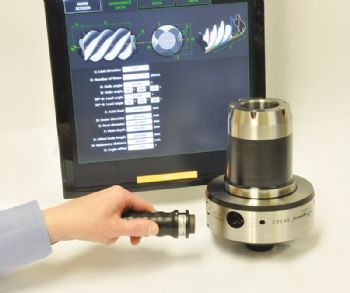
Precision Technologies Group company Holroyd Precision (
www.holroyd.com) has introduced a number of new developments to its rotor-milling and grinding machines.
Regional sales director Steven Benn said: “Our goal has always been to develop technologies that simplify the manufacturing of even the most complex helical components, as shown by our own HMI and the introduction of the Holroyd Profile Management system software program, which assists with the entire helical component-manufacturing process.”
Advanced RFID (radio frequency identification) scanning, developed for Holroyd’s Zenith 400 helical profile grinder, is now available with all Holroyd EX Series rotor-milling machines and Holroyd TG Series rotor- and screw-grinding machines.
“Particularly useful where machines are integrated into automated production cells, Holroyd’s RFID tagging process offers a fool-proof solution to quality control, ensuring that chuck, collet, cutter and tailstock — or virtually any component or tooling item that needs to be switched between manufacturing cycles — is changed to the correct item for any individual set-up.
“Furthermore, Holroyd is also working with leading automation specialists not only to incorporate ‘IO-Link’ communication technology into new machines but also to offer it as an upgrade opportunity to deliver rapid ‘single cable’ data transfer and performance-monitoring capability from older machine tools . . . For Holroyd machine tool customers, the real benefit will be the opportunity to learn from high levels of real-time data, as well as historic production and performance data, in order to make comparisons that can benefit efficiency, accuracy and quality — and determine trends.
“For example, does a machine’s work-head temperature alter significantly during a particular process — and if so, what is the cause? Also, do production rates and cycle times vary by operator — and why?
"Another consideration might be: how does a variation in a machine’s coolant pressure or flow rate relate to expected tool life? With production and machine condition data available immediately to desk-top, tablet and phone, we can give customers a wealth of information.
“Knowing exactly how different machines perform in quite different manufacturing environments — even if any variation in performance is miniscule — will enable us to deliver even higher standards of support to all our customers.”